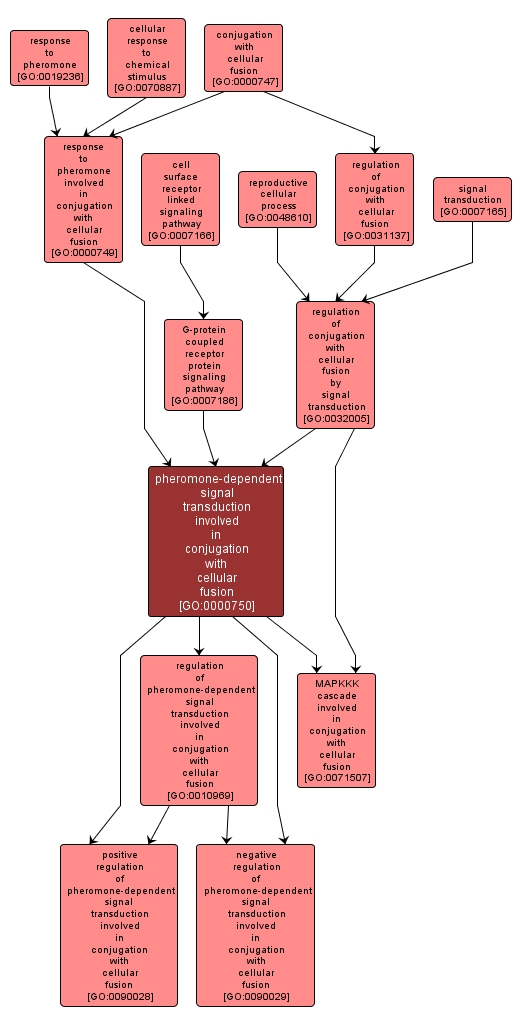GO TERM SUMMARY
|
| Name: |
pheromone-dependent signal transduction involved in conjugation with cellular fusion |
| Acc: |
GO:0000750 |
| Aspect: |
Biological Process |
| Desc: |
A signal transduction process resulting in the relay, amplification or dampening of a signal generated in response to pheromone exposure in organisms that undergo conjugation with cellular fusion. An example of this process is found in Saccharomyces cerevisiae. |
Synonyms:
- transduction of mating signal
- GO:0007330
- GO:0030454
|
|

|
INTERACTIVE GO GRAPH
|














